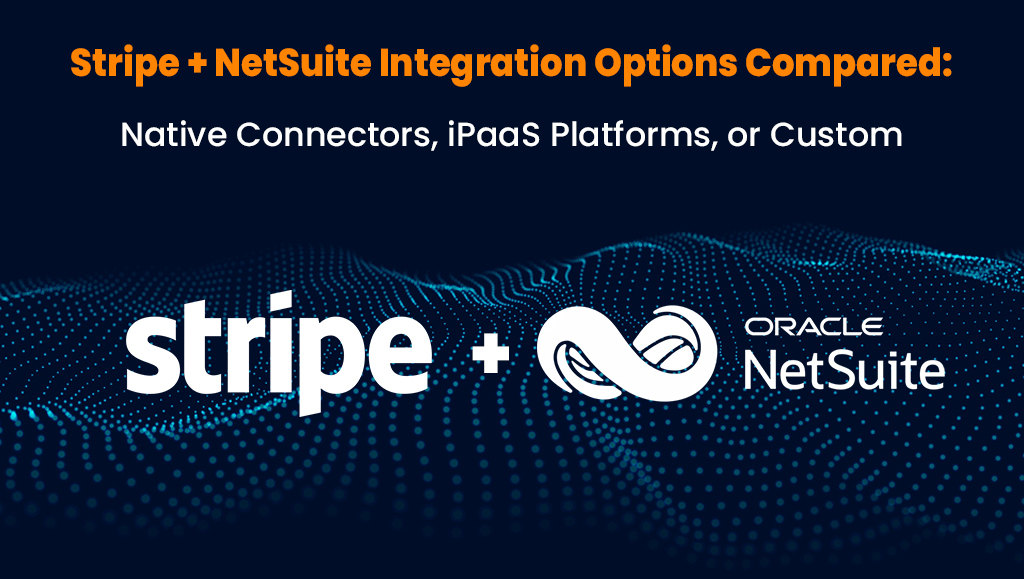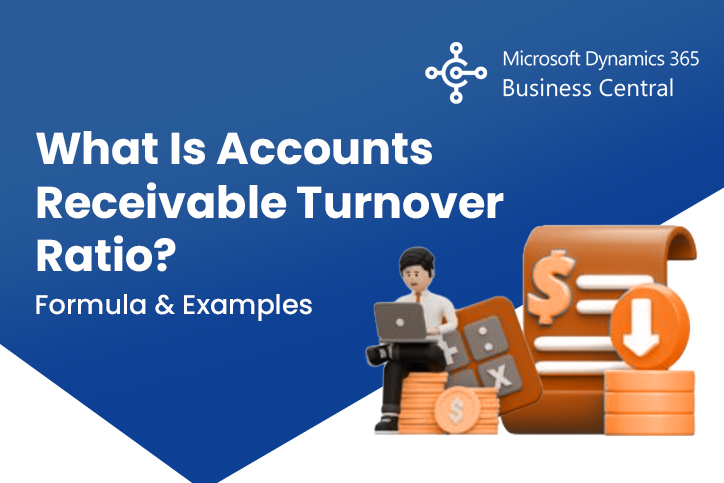Integrating EDI with NetSuite ERP is no longer a “nice-to-have” for modern businesses, it’s a necessity. With customer demands rising, supply chains growing more complex and trading partners requiring compliance, manual data entry and spreadsheets simply can’t keep up. Companies that stick with outdated processes often deal with order delays, chargebacks, compliance violations and costly human errors.
This is where NetSuite EDI integration becomes a game-changer. It automates the exchange of key business documents between your ERP and trading partners, improving speed, accuracy and scalability. Done right it transforms not just your back-office efficiency but also your relationships with customers and suppliers.
If you’ve been wondering how to implement EDI in NetSuite ERP without the usual pitfalls, this step-by-step NetSuite EDI integration guide will walk you through the process; from understanding what it is to building a roadmap, executing and scaling.
What is NetSuite EDI Integration and Why Does it Matter?
Electronic Data Interchange (EDI) is the standardized method of electronically transmitting business documents like purchase orders, invoices, shipping notices and inventory updates. When integrated into NetSuite ERP EDI acts as a bridge between your ERP system and trading partners by ensuring seamless data flow.
Here’s why it matters:
- Eliminates manual paperwork and rekeying of data.
- Reduces errors that lead to chargebacks or delays.
- Ensures compliance with partner requirements and industry standards.
- Speeds up cycles like order-to-cash and procure-to-pay.
- Increases visibility into supply chain activity for smarter decisions.
Without EDI, businesses risk slower transactions, inaccurate reporting and strained partner relationships. With EDI in NetSuite you shift from reactive firefighting to proactive and efficient operations.
Step 1: Assess Your Business Needs and Goals
Jumping straight into integration without analysis is a recipe for inefficiency. Start by defining:
- Trading partner requirements: Which partners mandate EDI? What standards do they follow (ANSI X12, EDIFACT, TRADACOMS)?
- Document priorities: Focus first on high-volume or high-risk documents such as purchase orders, invoices and shipping notices.
- Pain points: Are errors causing compliance fines? Are orders delayed? Is data visibility poor?
Pro Tip: Involve cross-functional teams (finance, logistics, operations, IT) during assessment. Their input helps avoid blind spots.
Step 2: Choose the Right NetSuite EDI Integration Approach
There isn’t a one-size-fits-all approach. Businesses typically choose one of the following:
| Approach | Best For | Advantages | Limitations |
|---|---|---|---|
| Direct Integration | Businesses with few partners and simple needs | Cost-effective, straightforward | Limited scalability, high IT burden |
| Third-Party EDI Providers | Mid-to-large enterprises with multiple partners | Prebuilt compliance, faster onboarding, expert support | Ongoing subscription costs |
| Custom Integrations | Complex businesses with unique workflows | Tailored to exact needs | Higher upfront cost, longer implementation |
Best Practice: Many growing businesses start with third-party providers for scalability and later move to hybrid/custom models as complexity grows.
Step 3: Select the Right NetSuite Integration Partner
NetSuite has powerful capabilities but successful EDI integration depends on choosing the right NetSuite integration partners. A skilled NetSuite integration firm or ERP consultant helps you:
- Map and customize EDI workflows inside NetSuite.
- Ensure compliance with industry and partner standards.
- Provide ongoing monitoring, updates and troubleshooting.
- Train your staff to manage day-to-day EDI operations confidently.
Warning: Cheap or inexperienced vendors may deliver a “quick fix” that fails under pressure. Partner with proven NetSuite integration experts who understand both the technical and business aspects of EDI.
Step 4: Configure Data Mapping and Workflows
This is where technical precision matters most. Data mapping ensures that fields in an EDI document (like invoice numbers or SKU codes) align with NetSuite’s internal fields.
Key steps include:
- Mapping documents: Purchase Orders → Sales Orders, Invoices → Accounts Receivable, ASNs → Inventory Updates.
- Automating workflows: Define triggers so transactions automatically update NetSuite without manual touchpoints.
- Validation rules: Catch mismatches (like missing PO numbers) before they cause disruptions.
Pitfall to Avoid: Skipping validation. Even a small mismatch between EDI data and NetSuite fields can cascade into costly errors.
Step 5: Testing and Partner Onboarding
Before flipping the switch always test thoroughly with sample transactions. This stage is about building trust with your system and your trading partners.
- End-to-end testing: Simulate real scenarios like order creation, invoice processing and shipment confirmations.
- Error handling: Check how the system responds to incorrect or incomplete data.
- Partner validation: Ensure your trading partners see transactions exactly as expected.
Once testing is successful, onboard partners in phases. Start with your highest-volume partners, then gradually add others.
Step 6: Go Live and Monitor Performance
Once you go live, the focus shifts to monitoring and improvement:
- Track KPIs: Order cycle time, error rate, partner compliance scores.
- Set alerts: Automate alerts for failed or delayed transactions.
- Establish feedback loops: Regularly review with your integration partner to fine-tune workflows.
Pro Tip: Use NetSuite dashboards to monitor EDI activity in real time for faster issue resolution.
Step 7: Optimize for Scalability and Growth
Integration is not a one-and-done project. As your business scales, revisit and refine your setup.
- Add new partners quickly with standardized onboarding workflows.
- Expand document types beyond POs and invoices to include forecasting, payment remittances and returns.
- Leverage automation features in NetSuite to reduce human oversight even further.
Think of EDI as a living system that grows with your supply chain.
Why Now is the Right Time to Embrace NetSuite EDI?
Global supply chains are moving faster than ever. Manual processes cannot keep pace with partner demands for real-time accuracy, compliance and speed. Businesses that delay EDI adoption often find themselves losing contracts or paying heavy penalties for non-compliance.
NetSuite EDI integration is not only about connecting systems it’s about future-proofing your operations.
Companies that invest in EDI with NetSuite report:
- Up to 60% faster transaction cycles
- 40% fewer order processing errors
- Stronger trading partner relationships thanks to reliability and compliance
If your organization wants to simplify workflows, eliminate costly errors and scale with confidence then now is the time to embrace EDI integration.
Transform Your Business with Smarter NetSuite Integration!
Implementing NetSuite EDI integration step by step ensures your business avoids pitfalls while reaping maximum value. From assessment to optimization, the process helps you cut costs, accelerate growth and strengthen your supply chain.
If you’re ready to unlock the full potential of NetSuite ERP, partnering with a trusted integration expert is the smartest next step.
Ready to simplify your ERP journey and maximize ROI? Schedule a free consultation with SoftArt Solutions Inc. and take the first step toward seamless NetSuite EDI integration.
Frequently Asked Questions:
Q1. What is NetSuite EDI integration?
Ans. NetSuite EDI integration connects your ERP system with trading partners, automating data exchange such as purchase orders, invoices and shipping details.
Q2. Why is EDI integration important for businesses?
Ans. EDI integration eliminates manual data entry, reduces costly errors, ensures faster transactions and improves partner relationships.
Q3. How long does it take to implement NetSuite EDI integration?
Ans. The timeline depends on the complexity of your processes and number of trading partners but most businesses achieve full integration within weeks to a few months.
Q4. Can small businesses benefit from EDI integration with NetSuite?
Ans. Yes, EDI integration helps small businesses scale faster by automating processes and reducing operational inefficiencies.
Q5. What are the key benefits of NetSuite EDI integration?
Ans. Some major benefits include real-time data accuracy, faster transactions, reduced operational costs and better compliance.
Q6. Do I need an ERP partner for NetSuite EDI integration?
Ans. Working with an experienced Oracle ERP implementation partner ensures smoother integration, customization and ongoing support.









